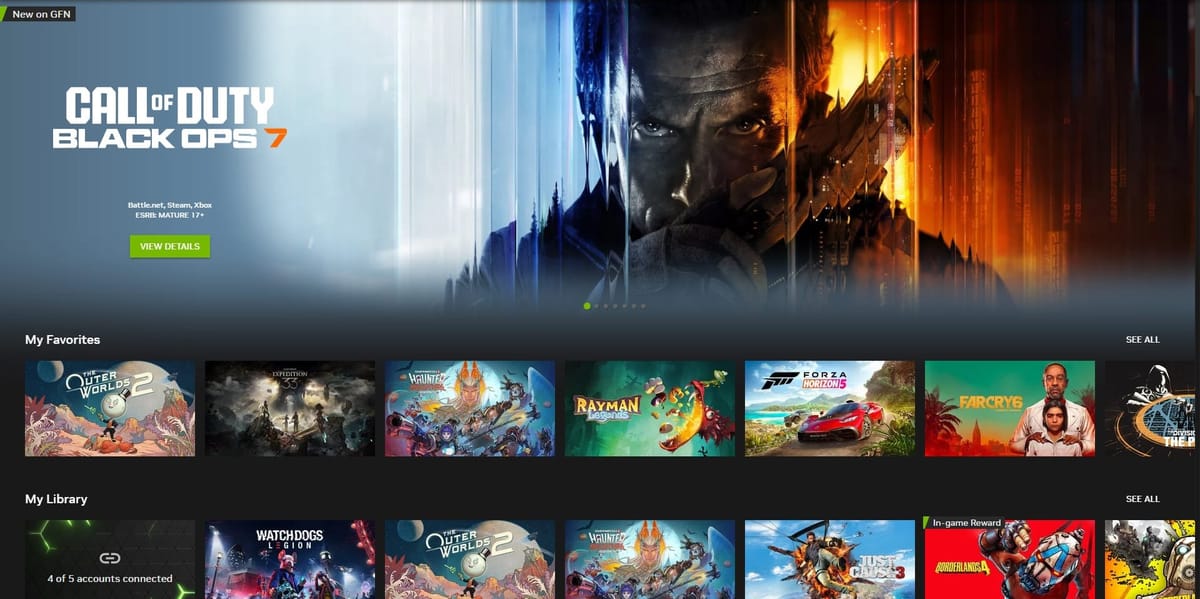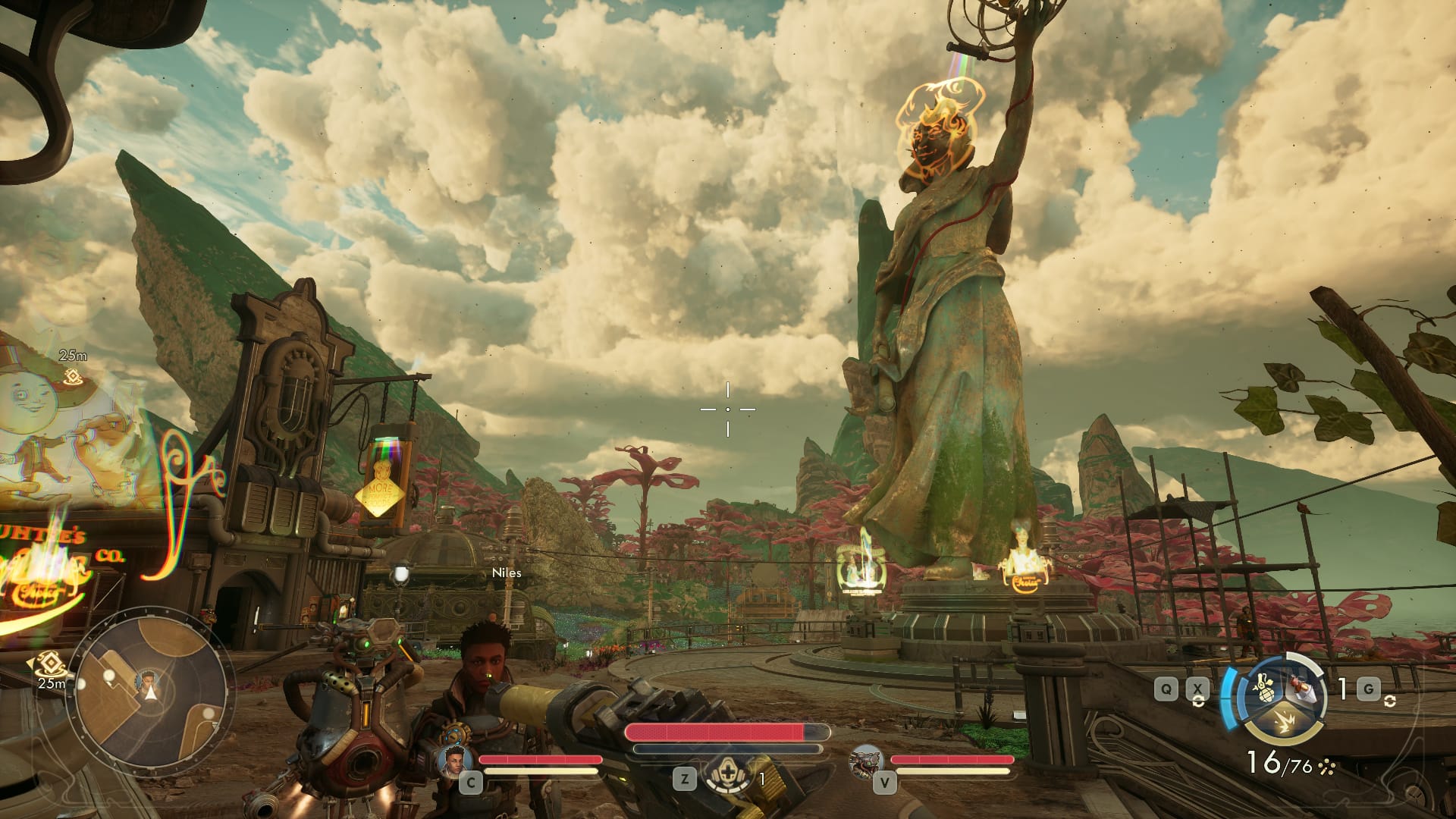
Every year, I check the state of cloud gaming, and every year I'm disappointed — muddy graphics and input lag besmirch the experience. Then came 2025. I was tasked with reviewing the ROG Xbox Ally; figured it would be a good time to perform my yearly test. I don't know what happened between 2022 and 2025; I don't know what witchcraft these engineers have done, but cloud gaming is in an amazing place. I'm going to dare to say that cloud gaming is at the point where it can replace hardware. The market isn't ready yet, but half the job is done. And Nvidia GeForce NOW leads the pack. When you can stream games at framerates above 120, in 4K, with imperceptible input lag, and they look like they're playing natively on your machine, you objectively have the best technology. That's Nvidia GeForce NOW.

GeForce NOW has presets that make it easy to open a game with excellent settings, which you can tweak further in-game. From my experience, it can take anything. I tested Watch_Dogs: Legion, a historically unoptimized game, using the Balanced setting to launch it, focusing on 1080p60 gaming at max settings. Everything looked its best and performed as if it had no issues. I tried playing it using the Cinematic preset, which focuses on 4K60 gaming. I cranked all the in-game settings to max, and it still looked marvelous--even more so. The framerate fluttered between 58 and 60 FPS, but I couldn't tell without the frame counter. I opened Just Cause 3--another historically poor-performing game--with the Cinematic preset and cranked the in-game settings as high as they could go, and I couldn't stop blowing things up. I don't want to play this on my current rig again. The Outer Worlds 2, set to 5K60--not exaggerating--looks mouth-dropping. All the details the developers put into the world are crisp, making this one of the best-looking games this year. I wouldn't have noticed that on my rig. And I played those three games with a gamepad, and there was no input lag. It felt magical.
Nvidia recently included a Competitive preset that, as you would imagine, is for games like Overwatch, Apex Legends, or Call of Duty. It allows up to 360 FPS, is optimized for the lowest possible latency, and, just like the other games, I couldn't tell the difference between playing on my PC or in the cloud. I would never have considered playing a competitive game through the cloud; too many variables exist that can make or break a match. But this works. It's genuinely remarkable. I only wish that there were a way to change the mode you're using when launching a game. It's annoying to launch Overwatch in 4K60 and forget to switch it back to Competitive mode, forcing me to close the game and reload everything.

To be clear, playing at those high framerates is only available with the Ultimate tier. Nvidia gave me a free trial of Ultimate to review the service, so I can't speak to what's possible in the lower tiers, but I imagine you won't get the same performance. You're certainly not getting the same framerates. This is one of the many considerations when deciding whether to subscribe to this service, and that's part of the problem with GeForce NOW: it's a must-buy subscription... if you fit specific criteria.
Nvidia states there are "ready-to-play" games on the service; there are, but they're free-to-play games. I suppose if you have an opportunity to get into Esports but don't have money to pay for a PC — only a monitor — then sure, this could be valuable. Another caveat: You can only play games you own. GeForce NOW isn't like Xbox Game Pass. Other than those free-to-play games, if you don't own it, you can't play it. That's not a problem if you're looking to play your library at the highest fidelity, but if you see a game on GeForce NOW that you want to play, you'll need to pay for it. So it feels like you need to pay to play your library, unless you use the free tier, which only allows 60 minutes of play time, and possibly a 2-minute wait to find a server before you can play, and that's with ads. Not to mention, all of this is contingent on your internet connection. The whole service is a non-starter if you don't have excellent speeds, which also costs more money. You could pay for Xbox Game Pass Ultimate (now $30, let's not forget), get games day one, and easily play them through GeForce now, allowing you to bypass the buying new games problem (waiting for sales is always an option), but you only do that if you want to play at the highest fidelity, totaling $50 a month.

It's hard to pin down who this service is for. Is it for me, whose computer is now the minimum specification for Borderlands 4, and I want to play games with stability and a great image? Is it for people who want to play their libraries with the best graphics? Is it for people who want to play their games on the go with their PC handheld? Nvidia would say it's for all of those people. I would say this service doesn't answer the question: "Do I want to pay just to do that?"But the technology is undeniable. It's really good — if you're playing on a PC or a PC handheld. Everything looks, sounds, and is as responsive as a desktop when playing on my Xbox ROG Ally. When I played on my LG TV, the image looked beautiful with HDR; the input lag was atrocious. I told myself I would play for an hour to test it, but I couldn't last more than 20 minutes. Not only was there input lag, but the audio desynced. I had the opposite experience with my Samsung Galaxy S24. Framerates were smooth and there was no input lag, but the graphics were muddy, and the audio sounded watery. I'll take performance over graphics any day, but I can't take terrible audio. Playing on a TV and mobile feels like playing out of desperation. Mobile is fine, but I wouldn't recommend buying the service if that's your only means to play--another caveat.
Nvidia GeForce NOW
Great
It's hard to ignore the number of considerations needed to justify subscribing to Nvidia GeForce NOW, but looking only at the service provided and the quality of the technology, GeForce NOW is undeniably excellent. It's impressively powerful, has no input lag when playing on a PC or PC handheld, and, put simply, it just works.
Pros
- Excellent streaming and technology
- Unnoticeable input lag
- Many options to maximize performance
Cons
- Can only play purchased games
- Using on mobile and TVs isn't worth it
- Pricing creates many reasons not to subscribe
This review is based on a retail copy provided by the publisher.
